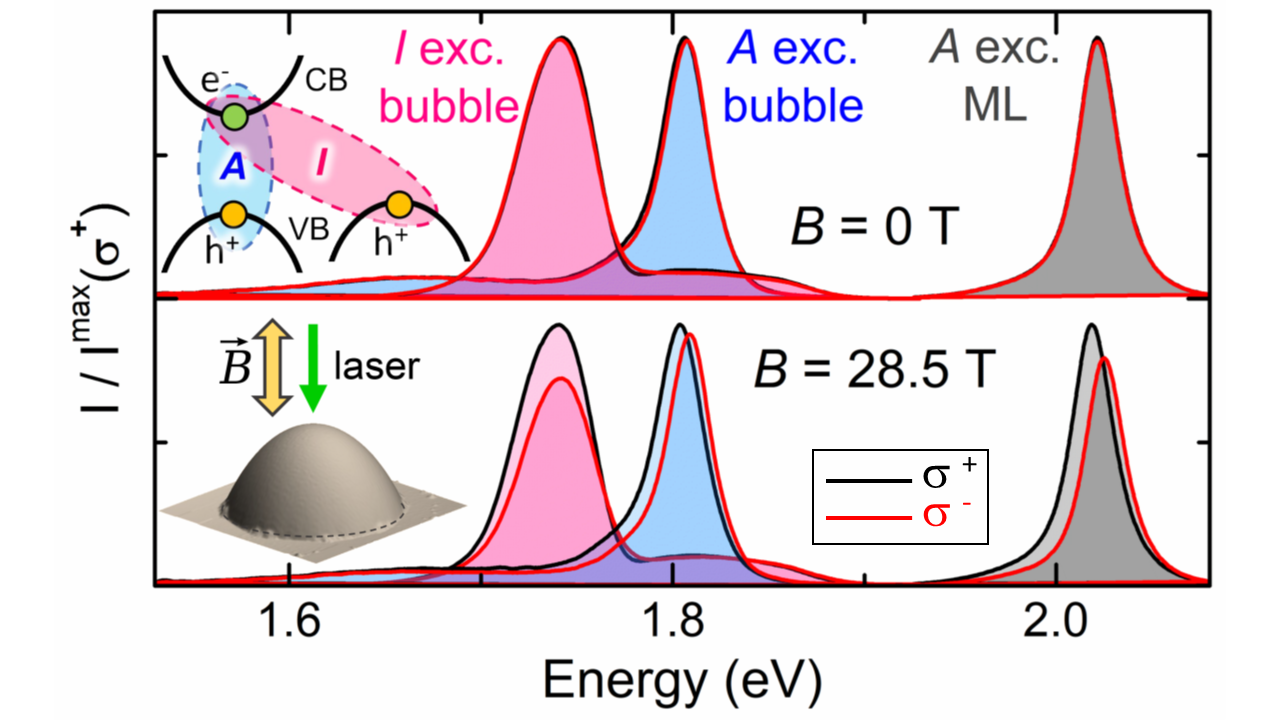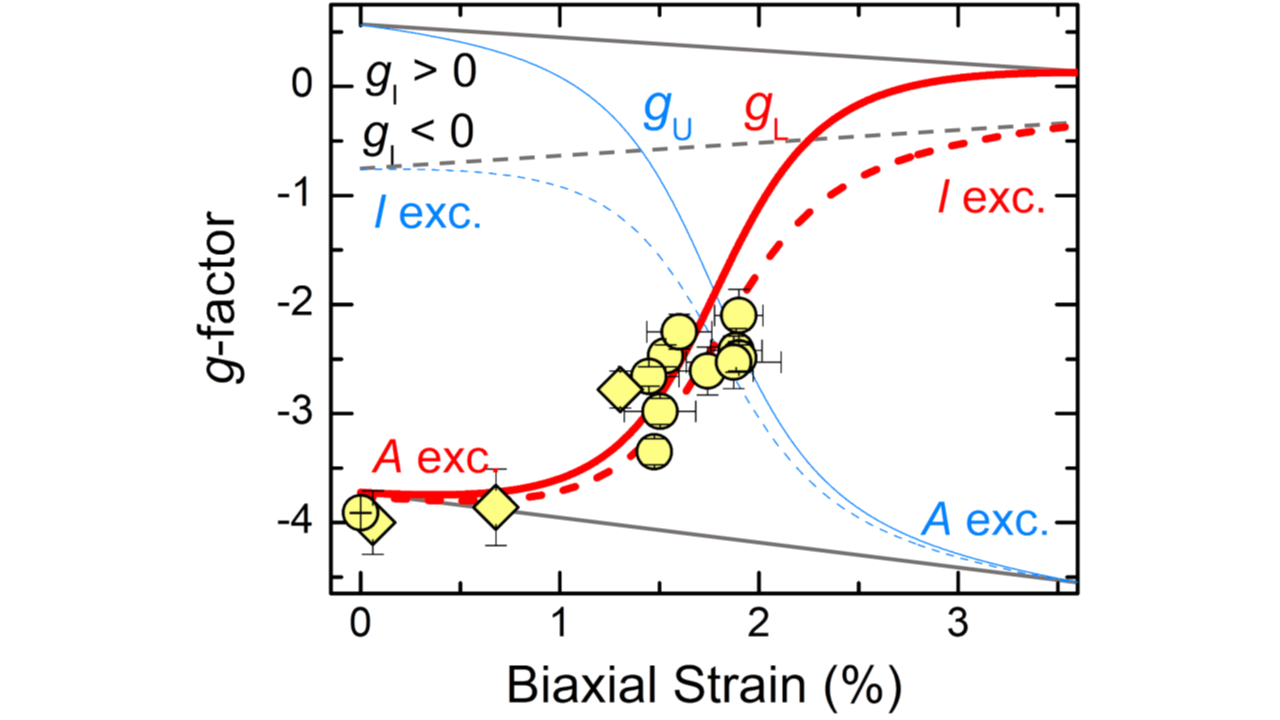Elena Blundo, Antonio Polimeni, Sapienza University of Rome, Adam Babiński, University of Warsaw, and Peter Christianen, HFML Nijmegen
Strain plays an important role in two-dimensional (2D) semiconductors. Thanks to their all-surface nature, these 2D materials feature an extraordinary capability to bear mechanical deformations without fracturing. This resilience to stress reveals itself a precious property that can be exploited for flexible devices. Therefore, most studies were devoted to the effects of strain on the electronic, optical, and transport properties of 2D semiconductors, in particular of transition-metal dichalcogenide (TMD) monolayers (MLs). These latter are regarded as a promising platform for quantum optical technologies. In particular, excitons in TMD MLs can be exploited as valley-carrying bits, whose characteristics are embodied in the gyromagnetic (g) factor determinable by magneto-optical spectroscopies. The interplay between strain and the exciton magnetic moment in TMD MLs has not been investigated. Typical straining devices hardly fit within the bore of a magnet, and performing experiments on strained microscale regions under high magnetic fields is challenging. This hurdle was recently overcome by a series of experiments performed at the EMFL facilities in The Netherlands and at the Regional Partner facilities in Poland within the dual-access scheme of the ISABEL project. WS2 MLs were subjected to strong mechanical deformation by creating atomically thin microbubbles filled by highly pressurized hydrogen gas (bottom inset Figure 1). Consequently, biaxial strain valuesin excess of 2 % can be reached in the bubbles, leading to a reordering of the valence-band states and to a direct-to-indirect exciton transition (top inset of Figure 1). In particular, the strain of the bubbles engenders controllable on/off-resonance conditions between direct and indirect exciton energy levels, which eventually hybridize. Compelling evidence of this phenomenon required the use of intense magnetic fields coupled to micro-photoluminescence measurements (Figure 1) that revealed an unpredicted dependence of the exciton Zeeman splitting on strain. A drastic reduction of the exciton g-factor modulus was found (symbols in Figure 2). Advanced theoretical methods (lines in Figure 2) were required to reproduce the unexpected strain dependence of the exciton g-factor, unveiling the underlying exciton-state admixing. The evidence of strain-induced exciton hybridization in a 2D system is not only crucial for future quantum electronics applications of 2D materials, but it also opens the doors to novel research in the field. For instance, exciton hybridization could influence the charge-carrier lifetime and radiative efficiency or could represent an important ingredient in understanding and tuning the coupling between different materials in 2D heterostructures.

Figure 1: Room-temperature μ-PL spectra at 0 and 28.5 T.Bottom inset: sketch of the magneto-μPL experiment. Top inset: band-structure configuration under strain-driven resonant conditions between the K and G points of the valence band.

Figure 2: Calculated and experimental g-factors. Diamonds and circles refer to measurements at the Regional Partner facility in Warsaw and at the EMFL facility in Nijmegen, respectively. Gray (colored) lines refer to calculations performed in the absence (presence) of direct-indirect exciton state hybridization.
Strain-induced exciton hybridization in WS2 monolayers unveiled by Zeeman-splitting measurements, E. Blundo, P. E. Faria Junior, A. Surrente, G. Pettinari, M. A. Prosnikov, K. Olkowska-Pucko, K. Zollner, T. Woźniak, A. Chaves, T. Kazimierczuk, M. Felici, A. Babiński, M. R. Molas, P. C. M. Christianen, J. Fabian, and A. Polimeni, Phys. Rev. Lett. 129, 067402 (2022).
https://journals.aps.org/prl/abstract/10.1103/PhysRevLett.129.067402
Contact: Antonio.Polimeni@uniroma1.it, Adam.Babinski@fuw.edu.pl, Peter.Christianen@ru.nl






